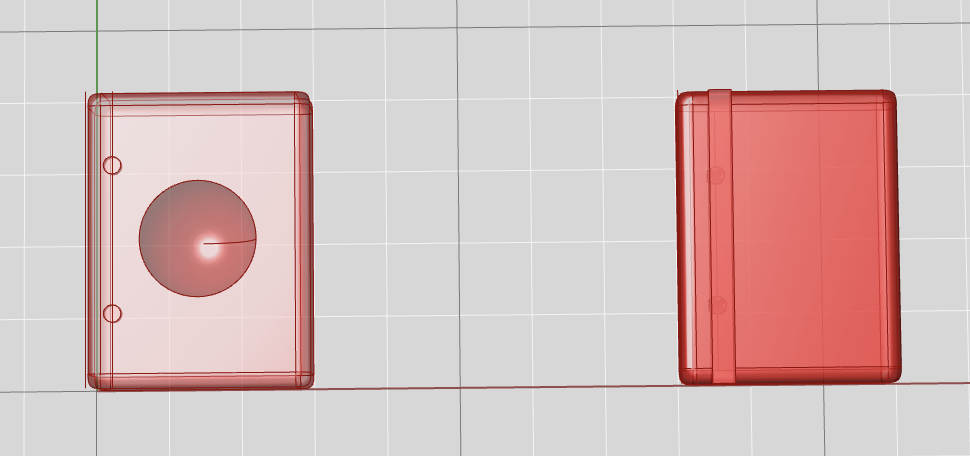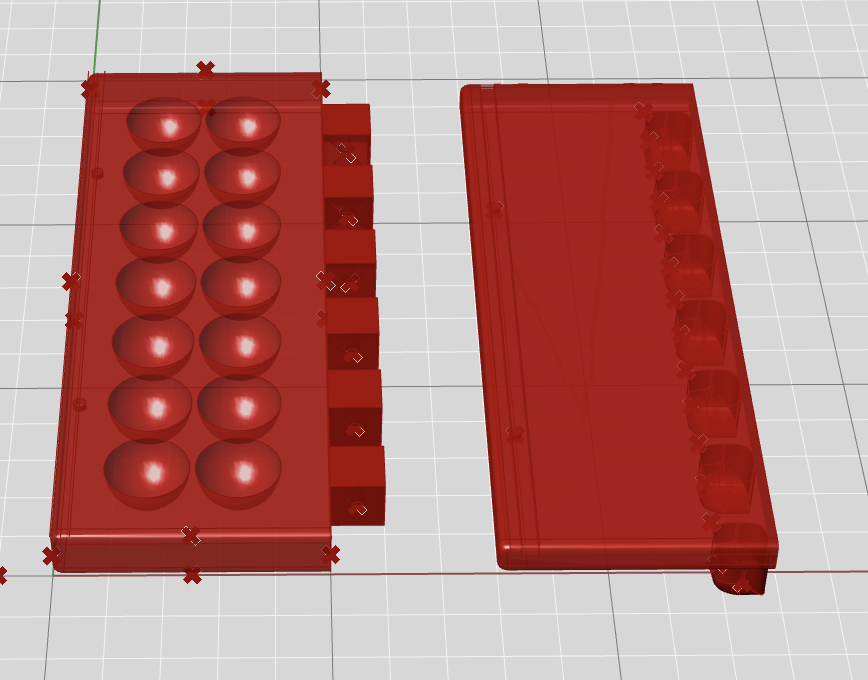Electronic Output Devices (+ MVP)
This week, I created a basic working model of my smart pill container. I dedicated my efforts to refining the container's design, alternating between using Rhino, especially Grasshopper, and 3D printing.
My initial design consisted of two components: a base with fourteen spherical cutouts arranged in a 2x7 grid, and corners designed to house hall effect sensors; and a lid, which is half the height of the base and has circular cutouts for magnets. Both parts have rounded, fileted edges for a smoother finish.


You can download the grasshopper file here:
Download my Grasshopper file.In my second iteration, I scaled down the design to have only one compartment, resembling a single-day pillbox. This compact version aimed to simplify the design for 3d printing. I was able to scale my design really easily because many (if not all) of the components of my original design are parametric and therefore easily adjustable.

After printing the second design, I attached hinges externally to connect the lid and base and secured magnets to the lid with hot glue. I also installed the hall effect sensors.
For the third iteration, I experimented with an integrated hinge mechanism. However, after some consideration, I decided to continue with the versions without hinges, as they presented a more refined and delicate appearance.

Add pictures of final MVP, and hinge design
While I’ve spent time in Grasshopper for previous assignments, this week is the first week where I really felt comfortable with the software.Even though it’s just a physical model, this is definitely the thing I’m most proud of that I’ve made so far. The first time I used Grasshopper, it felt so confusing and overwhelming, and it’s amazing to me how much I’ve been able to improve in such a short amount of time.
